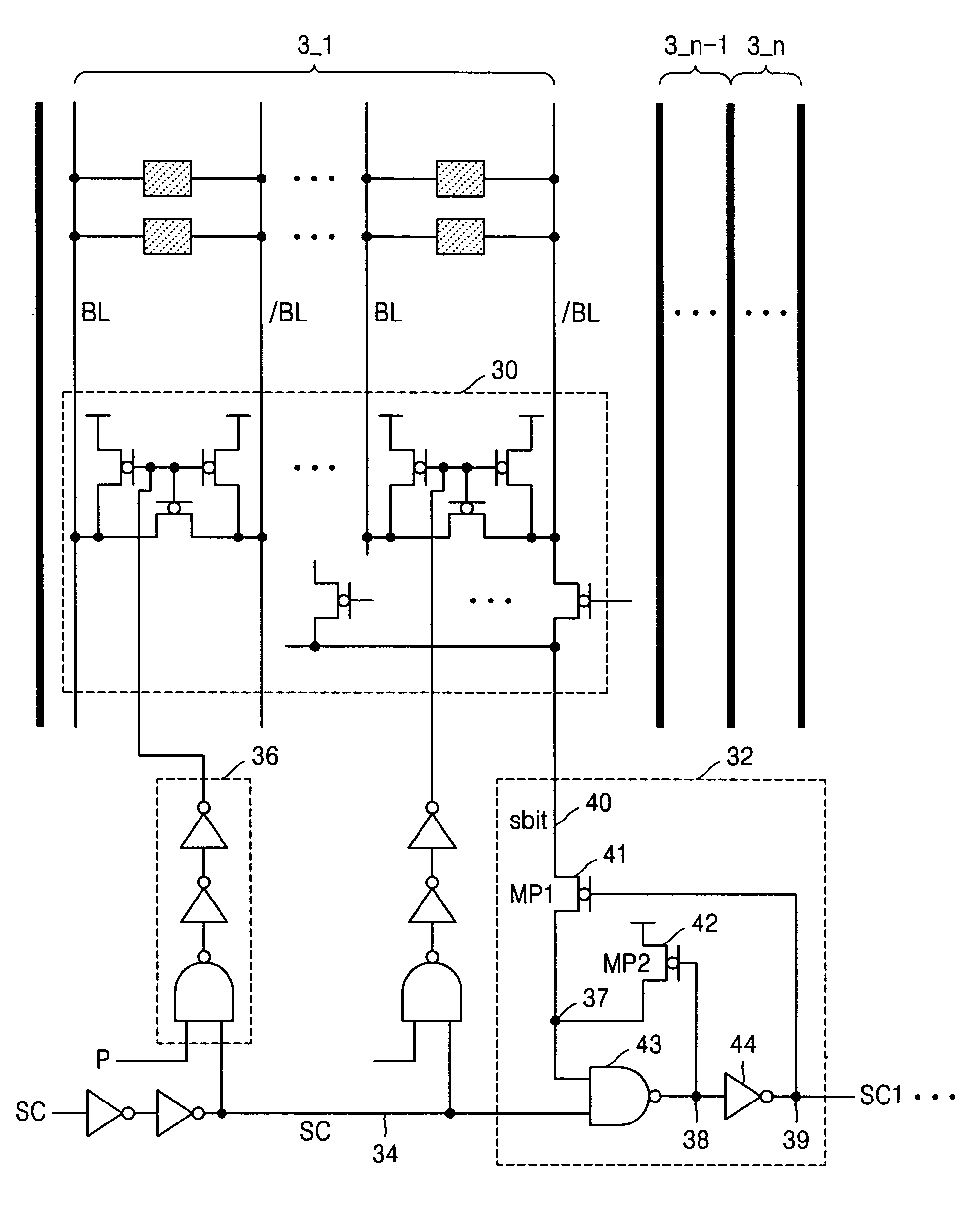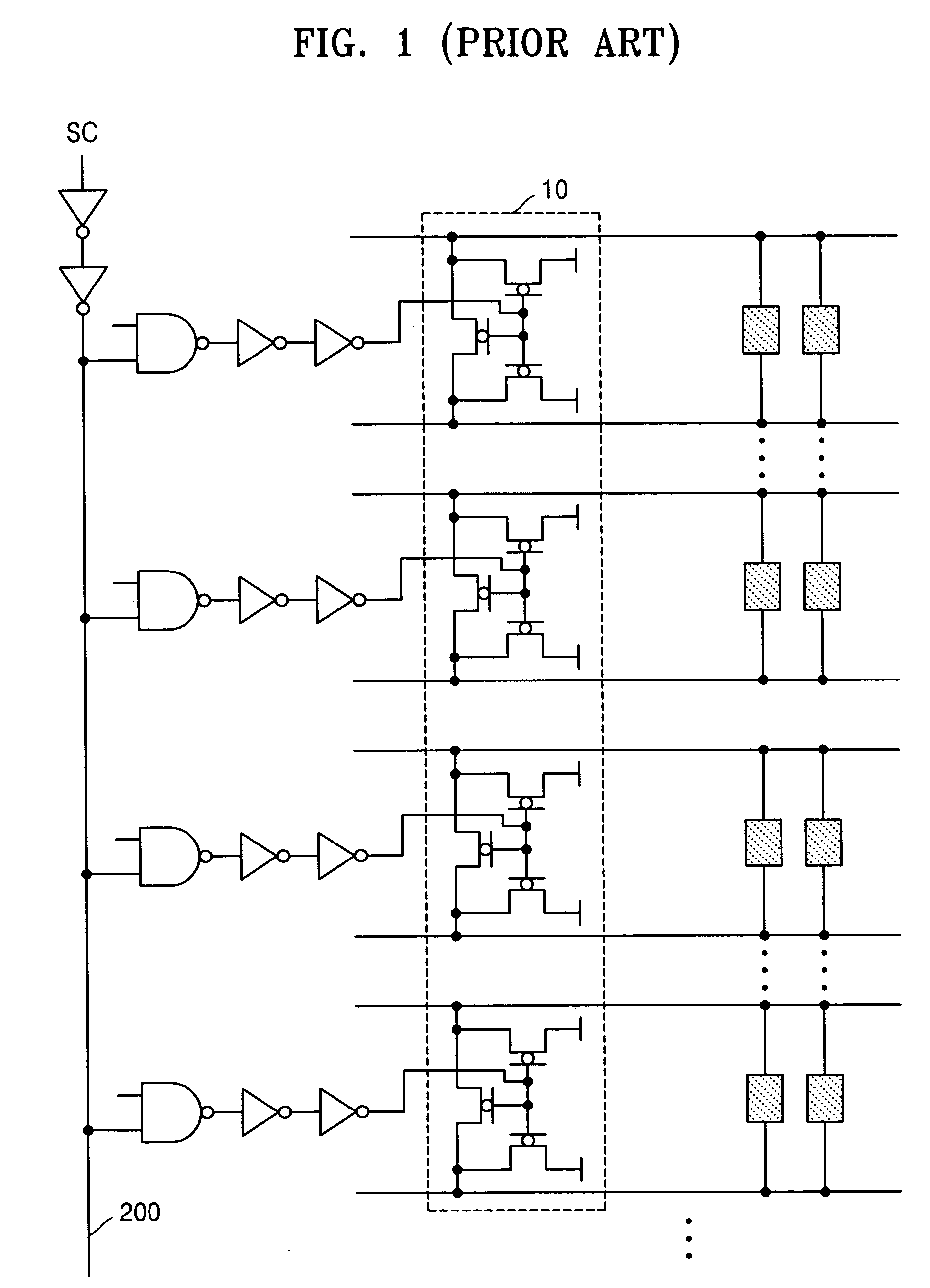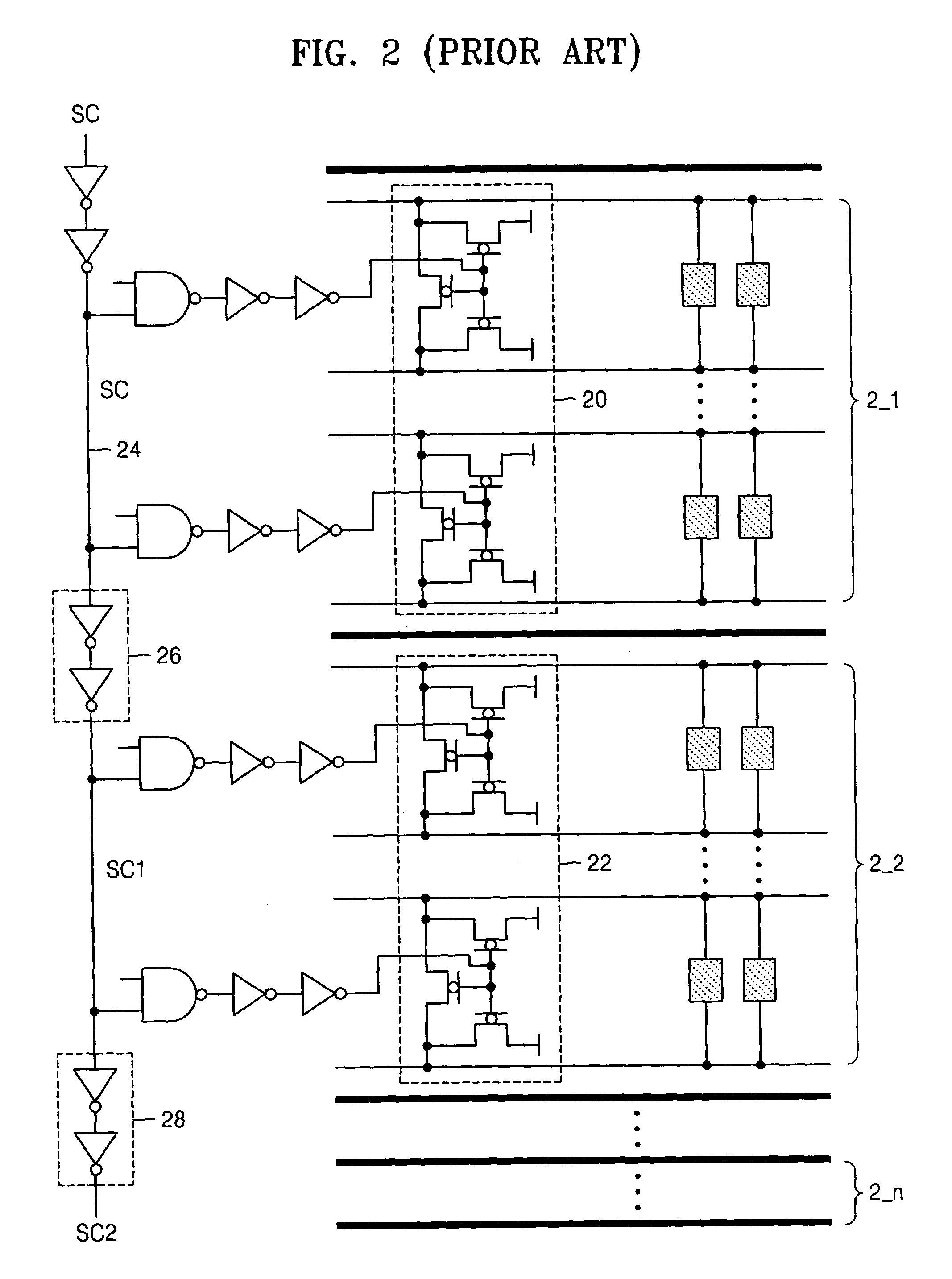Cascade wake-up circuit preventing power noise in memory device
a wake-up circuit and memory device technology, applied in the field of memory devices, can solve the problems of data loss of memory cells, multiple sources of noise, and large amount of peak current generation
- Summary
- Abstract
- Description
- Claims
- Application Information
AI Technical Summary
Benefits of technology
Problems solved by technology
Method used
Image
Examples
Embodiment Construction
[0046]The present invention will now be described more fully with reference to the accompanying drawings, in which embodiments of the invention are shown.
[0047]In the present invention, a cascade-type wake-up circuit is provided in which a subsequent block is placed in a wake-up mode after a previous block has been placed in wake-up mode. Further, the wake-up circuit of the present invention is smaller in size than a conventional wake-up circuit of the type including an inverter chain. In addition, the wake up circuit of the present invention can detect a change in a wake-up delay caused by certain processes, and can thereby control the peak current by using a bit line of a previous block as an input of a NAND feedback structure. Also, the wake-up circuit affects only the wake-up operation of the memory device and does not influence the performance of other system operations.
[0048]FIG. 5 is a circuit diagram of a wake-up circuit of an SRAM device according to an embodiment of the pr...
PUM
 Login to View More
Login to View More Abstract
Description
Claims
Application Information
 Login to View More
Login to View More - R&D
- Intellectual Property
- Life Sciences
- Materials
- Tech Scout
- Unparalleled Data Quality
- Higher Quality Content
- 60% Fewer Hallucinations
Browse by: Latest US Patents, China's latest patents, Technical Efficacy Thesaurus, Application Domain, Technology Topic, Popular Technical Reports.
© 2025 PatSnap. All rights reserved.Legal|Privacy policy|Modern Slavery Act Transparency Statement|Sitemap|About US| Contact US: help@patsnap.com



